
This is not the first cool
library we write about. But there is some majic in these awesome buildings breathing with history, clever thoughts, sciences... It's
something nearly sacred you always want to touch.
"The Brain of Berlin" — that is how an English architect sir Norman Foster called a new philological library of the Free University of Berlin in 2005. The building resembles a huge glass egg put on one side. It is actually hollow inside, and the storeys are made by four tiers of undulating galleries whose pattern looks like brain convolutions.
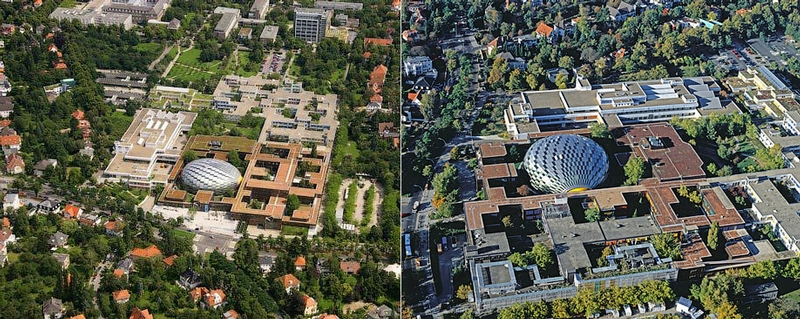
The construction contributed to the existing college building of the
Humanitarian Institute built in 1967-1979. Its project was developed by
German architects together with Jean Prouve.
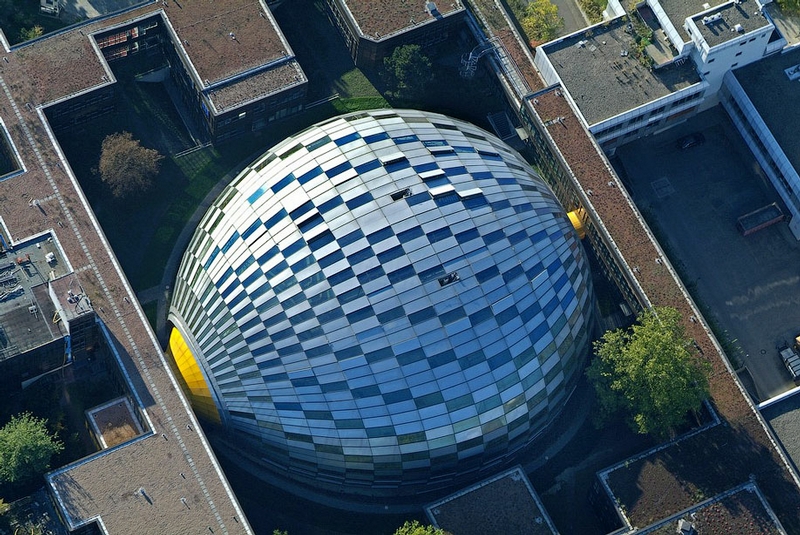
The Free University of Berlin is one of the main eduational
institutions in the city. Today 35 000 students study there. The main
building of the university was opened in 1973. In 2000 it became obvious
that the building needed extensive repairs. In order not to prevent
studying it was decided to preliminary make a new building of the
library where a lot of students would be able to study.
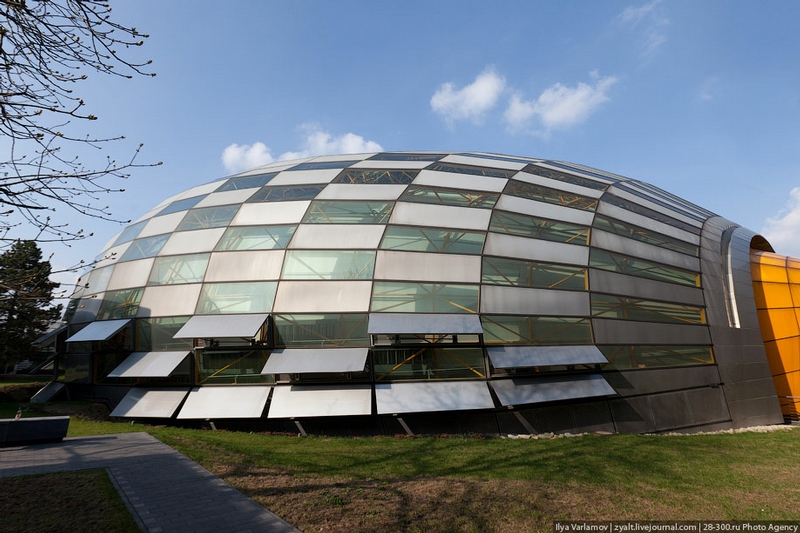
Originality of the construction is first of all in the cellular
construction of the "shell" made of steel, glass and aluminium. The
second "shell", made of glass fibre,covers the very kernel of the
building that has a dome shape.
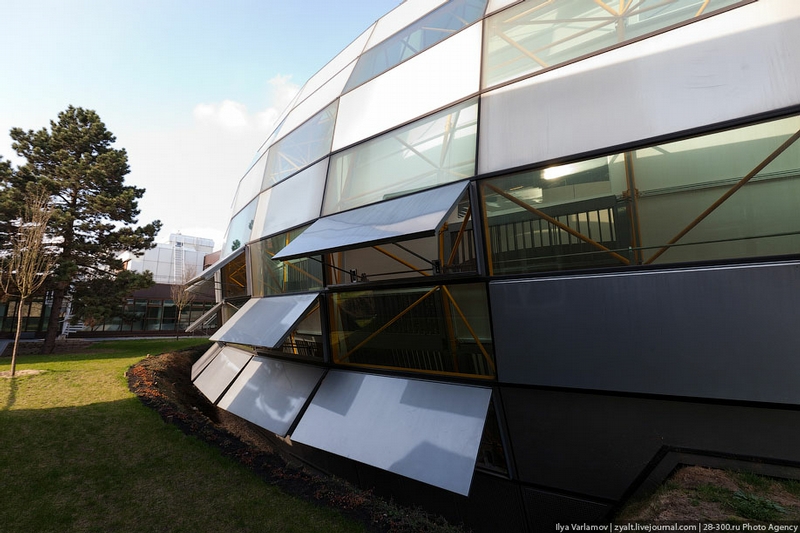
The climate system in the building meets all environmental
requirements: fresh air intake through the ventlights is controlled by
the computer, and the heating system uses heat of the warm surfaces.
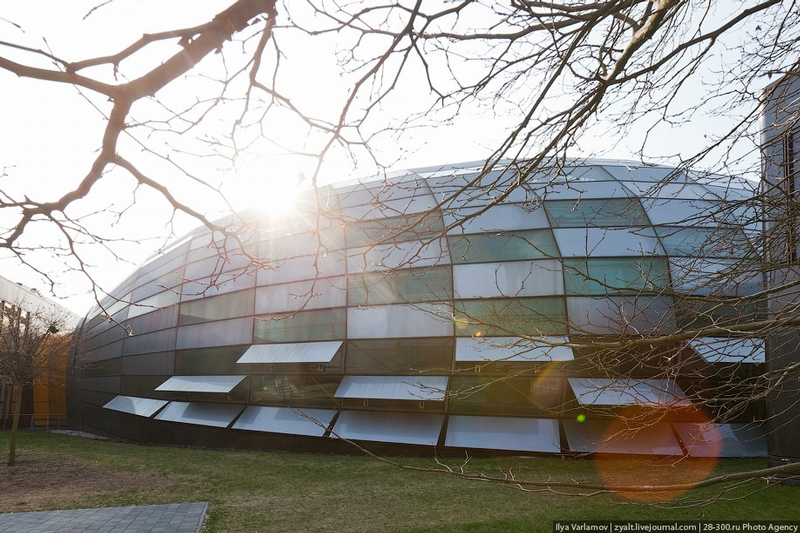
So the microclimate inside the building is good for readers.

Night illumination.
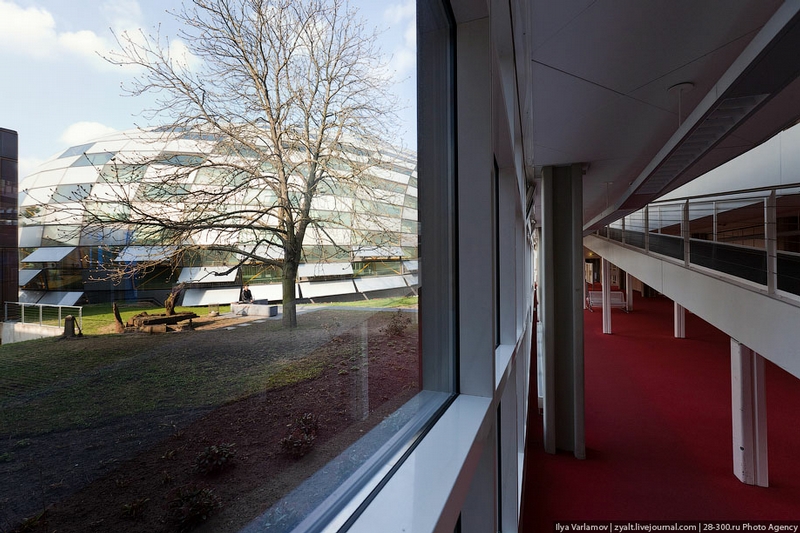
For the philological library of the University Lord Foster got a Berlin Prize for Architecture.

In the Foster's construction is 6300 m2 of useful area - for 650
readers and 700 000 books. Five-storey building, resembling an egg, is
covered with the two-layer "shell" of transparent and matte plates.
The tiers inside are made in streamline, wavy forms.
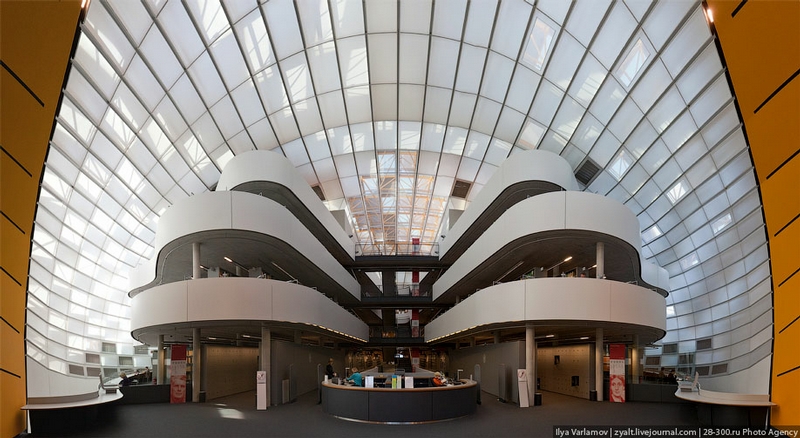
Such planning provides fresh air circulation and daylight illumination in the building.

The passage to the old building accentuates the difference of the
library from the other complex of the institute - it is the orange
painted "gateway".
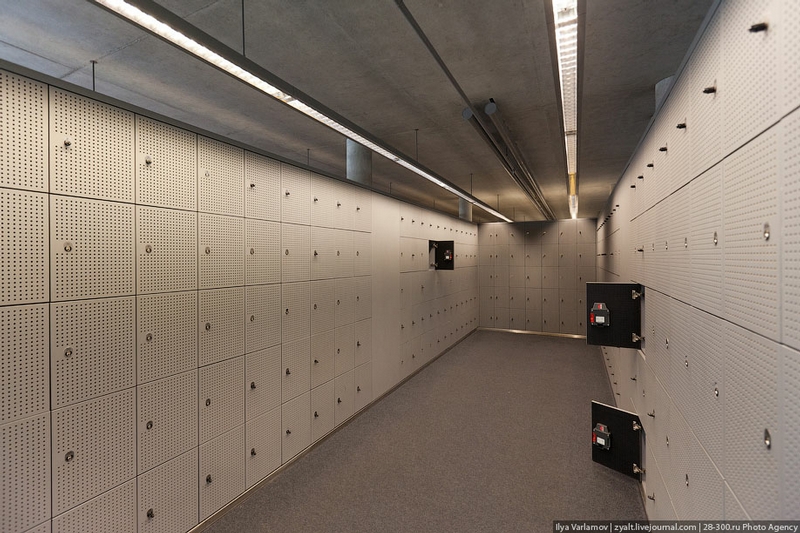
Here readers may leave their personal items.
Navigation.
These books have just arrived.
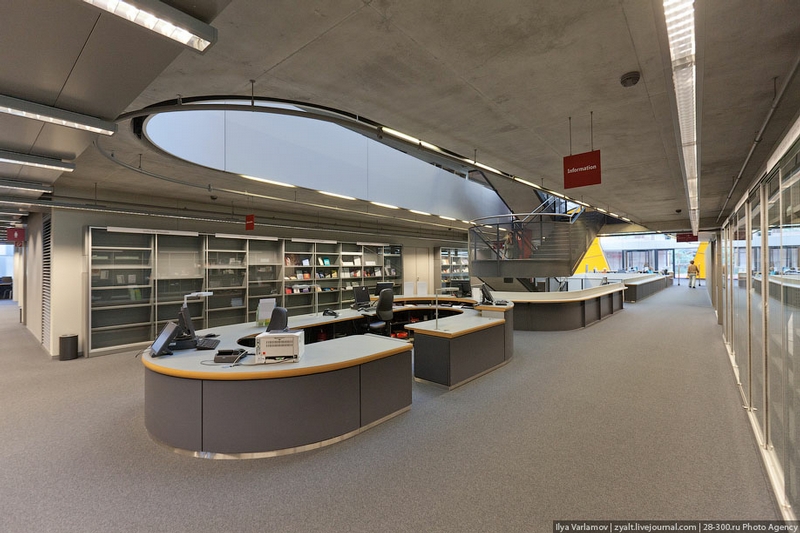
Enquiry counters are on each storey.
Even working places for the disabled.
On each storey are laces for scanning books.
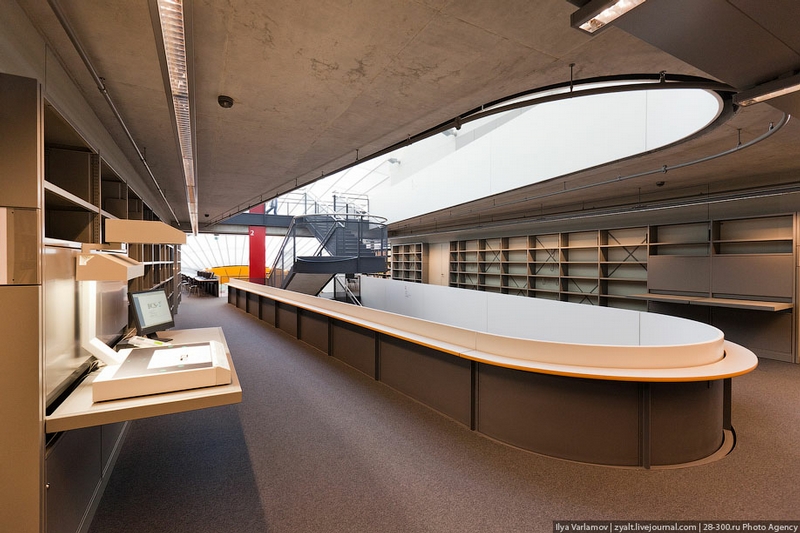
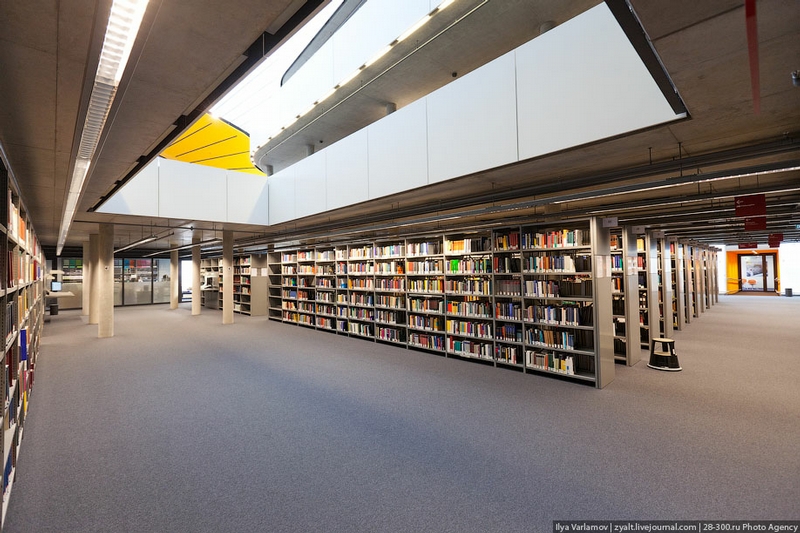
The building occupies more than 6000 m2, the library collections are
placed on shelves of public access and around them are 600 readers'
seats.

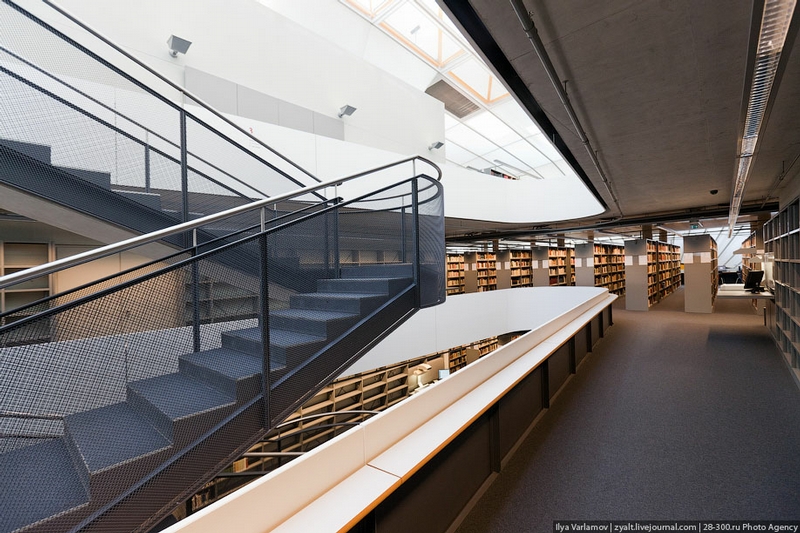
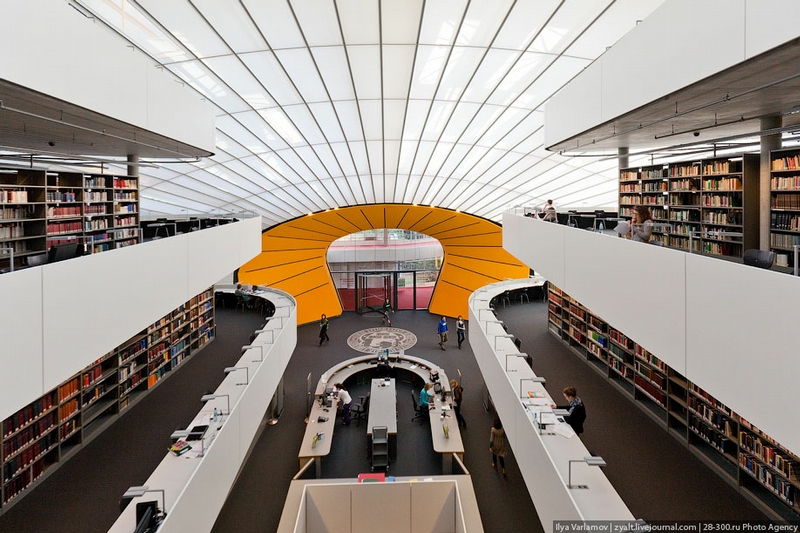
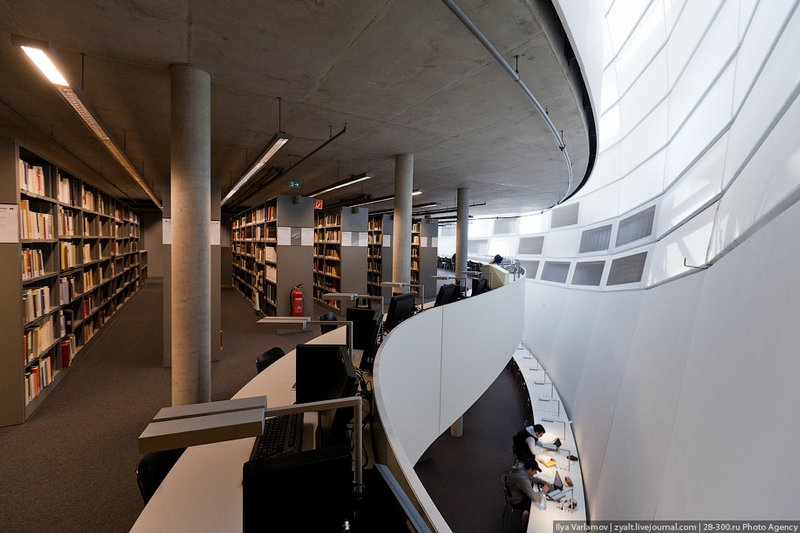
Half of the working places are equipped with computers, another half with sockets for notebooks.

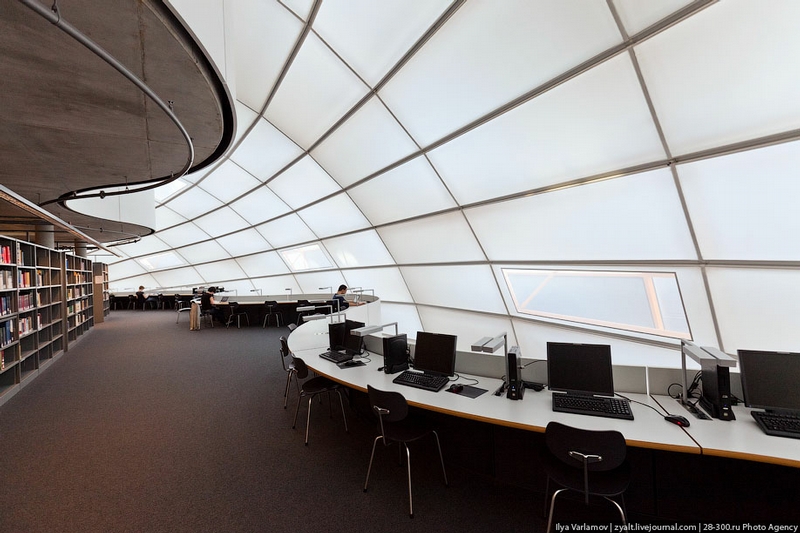

The library at night looks very cozy, but unfortunately closed.
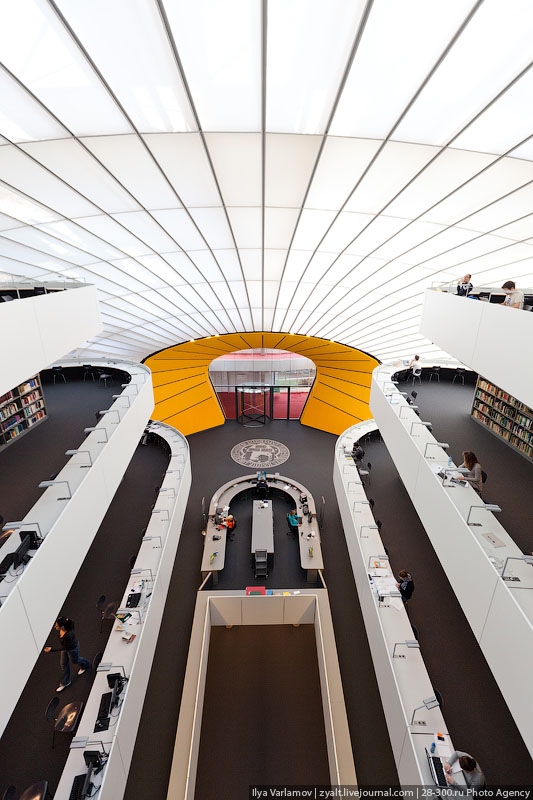
It's not forbidden to photograph here, but one is forbidden to use flash-light and a tripod.
via zyalt

0 comments:
Post a Comment